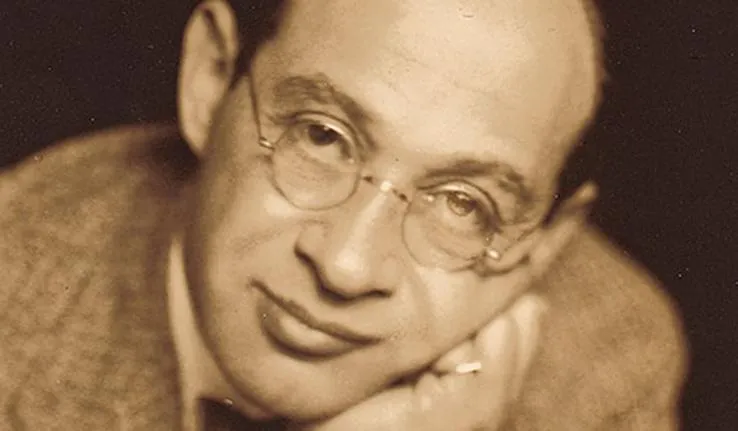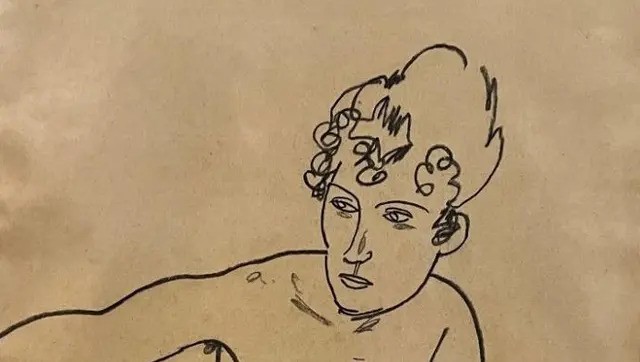|
Getting your Trinity Audio player ready...
|
An Egon Schiele painting was returned to rightful heirs of Holocaust-era art collector
Edited by: Fern Sidman
On Friday afternoon, Timothy Reif stood in the New York District Attorney’s Office, once again accepting a precious piece of his family’s history—a modernist drawing looted by the Nazis. The Jewish Telegraphic Agency reported that this marked the third such occasion since September that Reif had reclaimed a stolen artwork, a testament to his family’s enduring struggle for restitution. With him was a relative from another family who had also endured the horrors of the Nazi regime, calling attention to an extraordinary collaboration in Holocaust restitution efforts.

Unlike the contentious battles often seen between heirs and institutions over Nazi-looted art, this occasion was characterized by mutual respect and satisfaction.
Both families expressed immense gratitude as the drawing was returned to its rightful heirs. According to the information provided in the JTA report, Reif poignantly remarked, “In one of the darkest moments in the history of the world, everything ended. There is a moral center of gravity, there is an ethical sense, and a religious sense, and there is generosity coming out of something that was fundamentally evil. So for that to happen is incredible.”
The journey to this moment has been arduous. Reif and his relatives have dedicated countless hours over decades, navigating complex legal systems to reclaim the extensive art collection of their ancestor, Fritz Grünbaum, a Viennese Jewish cabaret performer. He was captured by the Nazis in 1938 after their annexation of Austria and was forced to execute a power of attorney while he was imprisoned in Dachau in favor of his wife, Elisabeth Grünbaum, who was later compelled to hand over his entire art collection to Nazi officials. Both Grünbaums died in concentration camps during the war.
Fritz Grünbaum possessed hundreds of artworks, including more than 80 works by Egon Schiele. Grünbaum’s collection was inventoried by art historian and Nazi-party member Franz Kieslinger and then impounded in the Nazi-controlled warehouse Schenker & Co A.G. in September 1938.
All works by Schiele had been declared degenerate and many of the confiscated works were auctioned or sold abroad to finance the Nazi war machine in a program overseen by Hitler’s Minister of Propaganda, Joseph Goebbels.
This poignant event is part of a broader effort to address the historical injustices inflicted by the Nazis, who branded Schiele’s work, along with that of many other Jewish and modernist artists, as “degenerate” and antithetical to their ideology.
The centerpiece of Friday’s ceremony was the Schiele drawing “Seated Nude Woman, front view.” The Schiele painting is thought to depict his wife Edith and completed in 1918. This piece had resided unknowingly in the home of Gustav Fritz Papanek, a Jewish economist born in Austria in 1926. Papanek had no knowledge of the artwork’s dark history. Noted in the JTA report was that the drawing’s journey—from Grünbaum’s possession, through Nazi plunder, to Papanek’s home, and finally back to Grünbaum’s descendants—illustrates the lingering complexities surrounding Nazi-looted art, even eight decades after World War II’s conclusion.
Papanek’s parents, both prominent psychologists, had narrowly escaped the Nazis by fleeing Austria for France and subsequently the United States. During their perilous journey, they managed to save hundreds of children by operating a refuge in France. The JTA reported that in 1961, they purchased the Schiele drawing, believing it to be a legitimate acquisition, and later gifted it to their son in 1969. Unbeknownst to them, the drawing had been looted from Grünbaum decades earlier.
For many years, the Papanek family cherished the drawing, displaying it prominently in their living room. When Papanek’s wife, Hanna, fell ill and became bedridden, the artwork was moved to her bedroom, providing her with comfort during her illness, as was reported by the JTA. The family’s connection to the drawing was profound, rooted in the belief that it was a rightful part of their household.
The truth about the drawing’s provenance
only came to light in September 2022, following Papanek’s death. “One thing is we’re grateful that Gus and Hanna were not aware of any of this, and that they enjoyed this piece of art in their home for the, I don’t know, 40 years that it was in their house, and they took great pleasure,” said Rocco Orlando, a relative of the Papanek family, as was reported by the JTA. “And so I’m glad they didn’t have to deal with yet one more reminder of their history.”
The report in the JTA said that an appraisal process revealed the falsified provenance papers, unmasking the drawing’s true history as a stolen piece of art. Upon discovering this, the Papanek family reached out to Fritz Grünbaum’s descendants, including Timothy Reif.
This restitution effort stands in stark contrast to the often contentious and prolonged legal battles where museums and private collectors fiercely guard their possessions.
The mutual respect and ethical considerations displayed by both families in this case offer a glimmer of hope and humanity in the otherwise grim history of Nazi-looted art.
The story of this particular drawing, “Seated Nude Woman, front view,” is emblematic of the tragic and convoluted path many artworks have taken since being seized during the Holocaust. The JTA report explained that in 1938, Grünbaum’s extensive art collection, consisting of approximately 400 works including numerous pieces by Schiele, was confiscated by the Nazi regime did not surface again for more than a decade.
During the war, Hitler’s personal art curator, Hildebrand Gurlitt, was authorized to sell off degenerate artwork that had been seized by the Nazi government as part of Goebbels’s program. Then, in the decades after the war, Kornfeld established a close business relationship with Hildebrand Gurlitt’s son Cornelius, from whom Kornfeld received hundreds of Nazi-looted artworks stolen from Holocaust victims.
In 1956, the artworks suddenly reappeared in Bern, Switzerland, and were sold by Eberhard Kornfeld, the owner of G&K Auction House, who died in April 2023. During the war, Hitler’s personal art curator, Hildebrand Gurlitt, was authorized to sell off degenerate artwork that had been seized by the Nazi government as part of Goebbels’s program. Then, in the decades after the war, Kornfeld established a close business relationship with Hildebrand Gurlitt’s son Cornelius, from whom Kornfeld received hundreds of Nazi-looted artworks stolen from Holocaust victims.
Kornfeld then sold most of Grünbaum’s Schieles to Otto Kallir, the owner of the NYC-based Galerie St. Etienne, with no provenance or ownership history. Kallir knew the artworks had belonged to Fritz Grünbaum before his death, however, because Kallir had seen the drawings in the Grünbaums’ Vienna apartment in 1928 when Kallir borrowed them for an exhibition at his Neue Galerie in Vienna. After purchasing the drawings from Kornfeld, Kallir transported them into Manhattan and then sold them to private collectors, individuals, and institutions.
Manhattan District Attorney Alvin Bragg, who has been instrumental in the effort to have this piece of Nazi looted article returned remarked, “The history behind Nazi-looted art is horrific and tragic, and the consequences are still impacting victims and their families to this day. It is inspiring to see both the Grünbaum and Papanek families join together to reflect on their shared history and preserve the legacy of Fritz Grünbaum.”
DA Bragg added that, “I want to commend the Reif family for harnessing Fritz Grünbaum’s legacy to create a better world by using the funds from their auctions to support underprivileged artists. Their commitment to giving back to the community is incredibly moving and should serve as an example for others to follow. I also want to thank the Papanek family for their willingness to fully cooperate throughout this entire investigation, and to the attorneys and analysts in our Antiquities Trafficking Unit for their tireless commitment to returning these artworks.”
Bragg’s statement highlights not only the historical injustices but also the collaborative spirit of the families involved in rectifying these wrongs.
According to a press release issued by DA Bragg’s office, in September 2023, the Office returned seven Schiele artworks from the Museum of Modern Art; The Ronald Lauder Collection; The Morgan Library; The Santa Barbara Museum of Art; and the Vally Sabarsky Trust in Manhattan. An additional artwork was surrendered by the collector Michael Lesh directly to the family in October 2023. In January 2024, two more artworks were returned, one from the Allen Museum of Art at Oberlin College and the other from the Carnegie Museum of Art.
The Schiele drawing Russian War Prisoner remains seized in place at the Art Institute of Chicago.
“The recovery of this important artwork — stolen from a prominent Jewish critic of Adolf Hitler —sends a message to the world that crime does not pay and that the law enforcement community in New York has not forgotten the dark lessons of World War II. District Attorney Bragg and his team led by Assistant District Attorney Bogdanos have not forgotten. Agent-In-Charge Arvelo of the Department of homeland Security and his exceptional team have not forgotten. The family of Fritz Grünbaum salutes each and all of you as shining examples of the best ideals of law enforcement,” said Timothy Reif, according to a press release issue by DA Bragg’s office.
“We believe that returning the drawing is the right thing to do. We are fortunate that our family, including Helene, Ernst, Gus and Hanna Papanek were able to enjoy viewing this work of art on a daily basis. The experience of the two families serves as yet another reminder of the evil and brutality of the Nazi regime,” said the Papanek family.
“We must never forget the unimaginable depravity inflicted upon the Grünbaums and all who were killed during the Holocaust, nor can we ever reverse the inhumanities of the past. We hope that we can, at the very least, provide the Reif family with the freedom to dictate for themselves how they choose to honor and recognize their slain loved ones,” said HSI New York Special Agent in Charge Ivan J. Arvelo. “I commend HSI New York’s Cultural Property, Art and Antiquities group, in coordination with the Manhattan District Attorney’s Office, for their commitment to securing whatever justice possible for the Grünbaums and their progeny.”
During District Attorney Bragg’s tenure, the ATU has recovered almost 2,100 antiquities stolen from more than 30 countries and valued at more than $250 million. Since its creation, the ATU has convicted 16 defendants for cultural-property-trafficking offenses, filed extraditions for 6 others, recovered more than 5,700 antiquities valued at more than $450 million, and returned more than 4,600 to more than 25 countries—with another 1,000 scheduled to be repatriated in the coming months.
Assistant District Attorney Matthew Bogdanos, Chief of the Antiquities Trafficking Unit and Senior Trial Counsel conducted the investigation along with Assistant District Attorney Edward Smith, Investigative Analyst Hilary Chassé, and Special Agent Megan Buckley. The District Attorney’s Office would like to thank the Papanek Family for their admirable assistance and cooperation with our investigation.
The return of this Schiele painting is a powerful act of restitution, addressing the historical wrongs and providing a measure of justice for Grünbaum’s descendants. It also exemplifies the ethical responsibilities of current owners of such artworks and the importance of thorough provenance research.
As these stolen artworks are returned to their rightful owners, they do more than restore property; they reclaim history and honor the memories of those who suffered. The restitution of Nazi-looted art is not just about returning objects but about acknowledging and rectifying the profound injustices of the past, ensuring that such histories are remembered and learned from by future generations.





